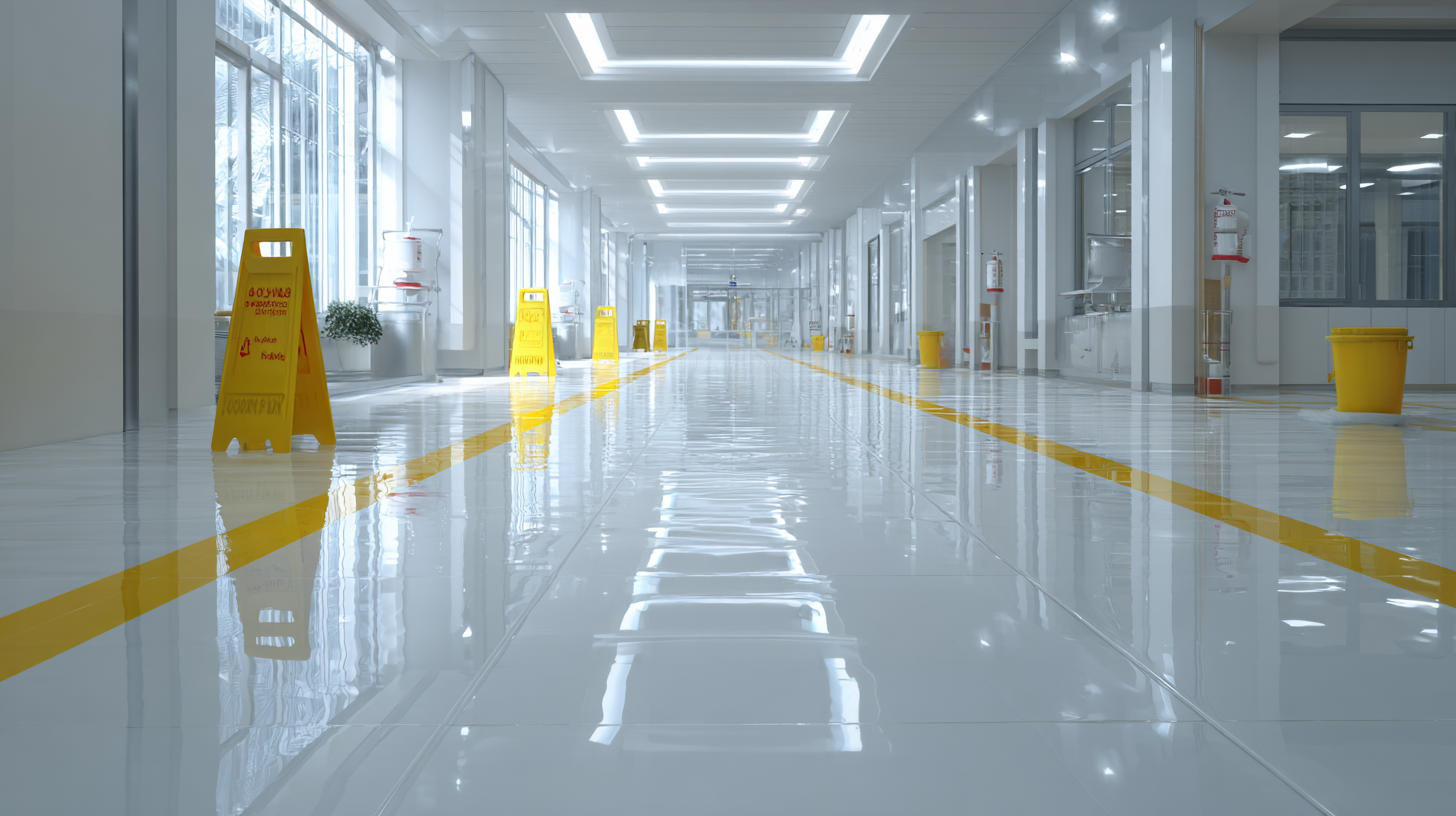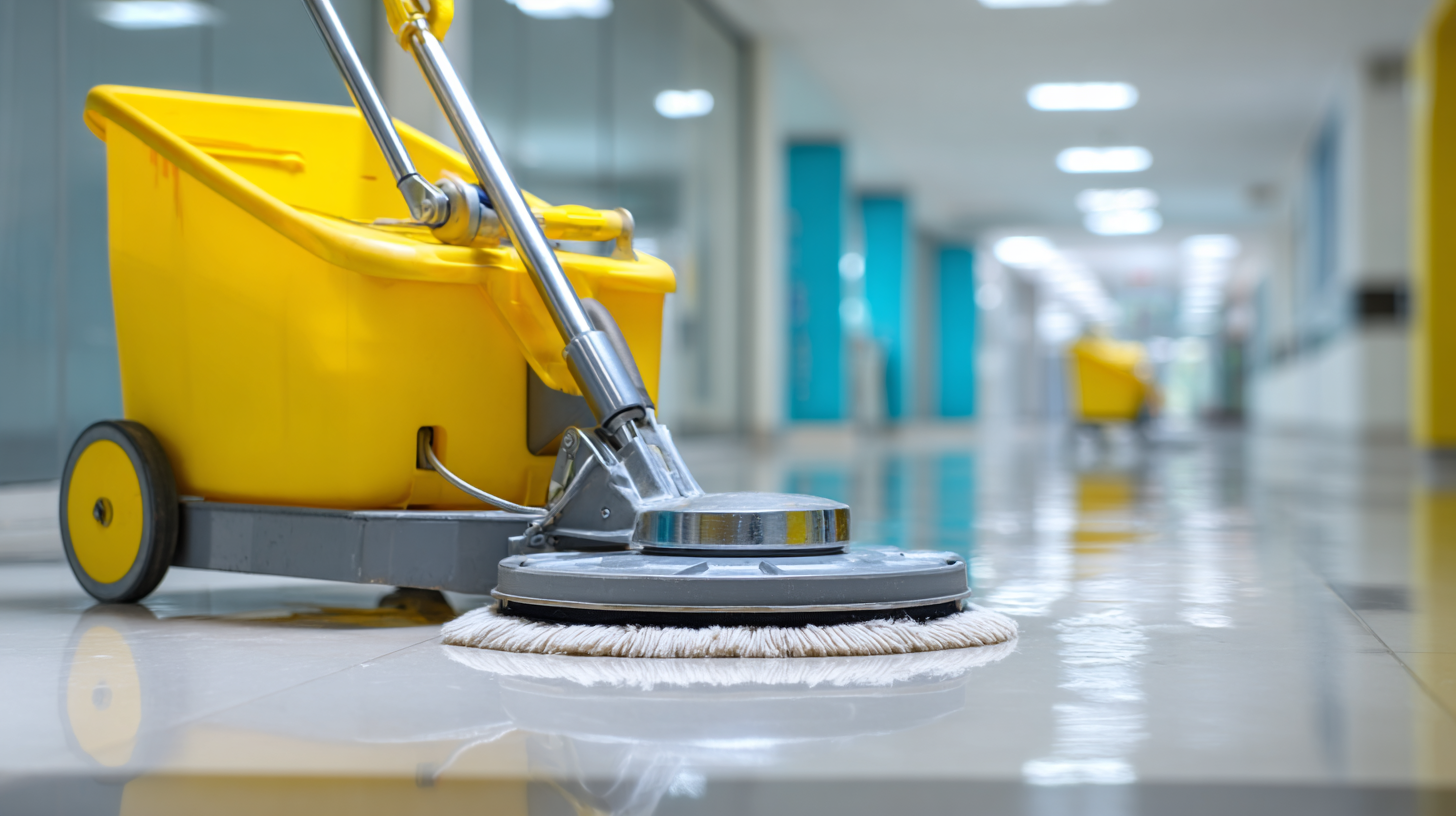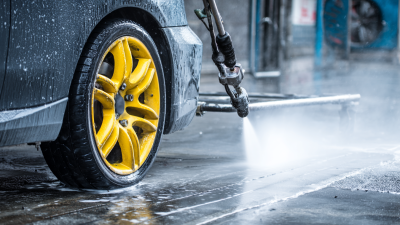What is the Importance of Floor Cleaning in Maintaining Workplace Hygiene and Safety
 In today's fast-paced work environment, maintaining workplace hygiene and safety is more critical than ever, and one often-overlooked aspect is effective floor cleaning. The state of the floors in any workplace can significantly impact not only the health of employees but also overall productivity. Regular and thorough floor cleaning is essential in preventing the accumulation of dust, dirt, and allergens, which can contribute to respiratory issues and other health problems. Moreover, clean floors reduce the risk of slips, trips, and falls, which are among the most common workplace accidents. By implementing a structured approach to floor cleaning, organizations can create a healthier, safer, and more welcoming work environment. This guide will explore various methods and best practices for efficient floor cleaning, highlighting its importance in upholding workplace hygiene and ensuring the well-being of all individuals within the space.
In today's fast-paced work environment, maintaining workplace hygiene and safety is more critical than ever, and one often-overlooked aspect is effective floor cleaning. The state of the floors in any workplace can significantly impact not only the health of employees but also overall productivity. Regular and thorough floor cleaning is essential in preventing the accumulation of dust, dirt, and allergens, which can contribute to respiratory issues and other health problems. Moreover, clean floors reduce the risk of slips, trips, and falls, which are among the most common workplace accidents. By implementing a structured approach to floor cleaning, organizations can create a healthier, safer, and more welcoming work environment. This guide will explore various methods and best practices for efficient floor cleaning, highlighting its importance in upholding workplace hygiene and ensuring the well-being of all individuals within the space.
The Role of Clean Floors in Preventing Workplace Accidents
Clean floors play a crucial role in preventing workplace accidents, contributing significantly to the overall safety of employees and visitors. When floors are kept clean and dry, the risk of slips, trips, and falls—common workplace hazards—substantially diminishes. Regular cleaning helps remove dirt, debris, and spills that can create hazardous conditions. For instance, spills that are left unattended can lead to serious injuries, impacting not only the affected individuals but also potentially resulting in costly compensation claims for employers.
Moreover, a clean floor promotes a positive working environment that encourages productivity. Employees are less likely to be distracted or worried about potential accidents in a tidy workspace. In contrast, dirty or cluttered floors can create a sense of disorder and increase stress levels, adversely affecting morale and performance. By prioritizing floor cleanliness, organizations demonstrate their commitment to employee well-being and foster a safety culture that can significantly reduce accident rates and enhance operational efficiency.
What is the Importance of Floor Cleaning in Maintaining Workplace Hygiene and Safety
| Aspect | Description | Impact on Safety |
|---|---|---|
| Regular Cleaning | Consistent maintenance of floor surfaces to remove dirt and hazards. | Reduces slip and fall incidents, enhancing overall workplace safety. |
| Surface Type | Various flooring materials require different cleaning methods. | Proper care can prevent surface degradation and minimize hazards. |
| Use of Proper Cleaning Agents | Choosing biodegradable and workplace-safe cleaning solutions. | Limits chemical risks and maintains a healthier workplace environment. |
| Employee Training | Educating staff on proper cleaning practices and accident prevention. | Increases awareness of hazards and encourages proactive safety measures. |
| Inspection & Maintenance | Regular inspection of floors for damage or hazards. | Proactive repair measures can significantly reduce accident rates. |
How Floor Cleaning Contributes to Employee Health and Well-Being
Floor cleaning plays a crucial role in promoting employee health and well-being in the workplace. Clean floors minimize the accumulation of dirt, dust, and allergens that can lead to respiratory issues and other health problems among employees. Regular cleaning not only enhances the aesthetic appeal of the environment but also reduces the risk of slips and falls, which are common workplace accidents. By maintaining spotless floors, organizations can ensure a safer work environment, fostering a sense of security among employees.
Moreover, a clean workplace can significantly impact employee morale and productivity. When employees work in a clean and hygienic setting, they are more likely to feel valued and motivated. The psychological effects of a tidy environment can lead to increased focus and efficiency, allowing employees to perform at their best. Investing in floor cleaning as part of a broader hygiene strategy reflects a company’s commitment to employee well-being, which ultimately contributes to a positive workplace culture.

Best Practices for Effective Floor Maintenance in Workspaces
Effective floor maintenance is crucial in promoting workplace hygiene and safety. Studies indicate that nearly 80% of workplace accidents are slip-and-fall incidents, many of which are attributed to dirty or improperly maintained floors. To mitigate these risks, implementing a systematic cleaning regimen is essential. Regular cleaning not only removes debris and spills but also helps to control bacteria and allergens, contributing to a healthier work environment. According to the International Facility Management Association (IFMA), facilities that prioritize cleanliness can result in a 14% increase in employee productivity and a significant reduction in sick days.

Best practices for floor maintenance should include a combination of daily cleaning tasks and periodic deep cleaning. Daily tasks might involve sweeping or vacuuming to remove dirt and dust, along with immediate attention to spills to minimize slip hazards. Utilizing appropriate cleaning solutions tailored to the type of flooring—whether hardwood, tile, or carpet—is also essential. Additionally, implementing a professional deep cleaning service periodically not only enhances the cleanliness of the workspace but also extends the life of the flooring materials.
As reported by the Occupational Safety and Health Administration (OSHA), maintaining clean floors can lead to a safer workplace culture, which continually emphasizes the importance of preventive measures in minimizing hazards.
Impact of Floor Hygiene on Company Image and Employee Morale
Maintaining floor hygiene in the workplace is crucial not only for health and safety but also for enhancing a company's image. A clean and presentable environment reflects professionalism and attention to detail, which can significantly influence clients' perceptions. When visitors observe well-maintained floors, they are likely to associate this cleanliness with the overall quality of services or products offered by the business. A positive impression can lead to increased client trust and loyalty, ultimately benefiting the company's reputation and bottom line.
Moreover, the state of the workplace can directly impact employee morale. A clean and organized space fosters a sense of pride among employees, making them feel valued and motivated. When workers operate in a hygienic environment, they are less likely to fall ill, reducing absenteeism and enhancing productivity. Additionally, a commitment to cleanliness showcases that the organization cares about the well-being of its staff, further boosting morale. Therefore, investing in floor cleaning is not merely a matter of hygiene but a strategic move that cultivates a positive workplace culture and enhances employee satisfaction.
Essential Tools and Techniques for Comprehensive Floor Cleaning
Effective floor cleaning is paramount in maintaining workplace hygiene and safety. According to a report by the International Sanitary Supply Association (ISSA), nearly 80% of all floor dirt comes from exterior sources, making comprehensive cleaning essential. Regular and thorough floor cleaning not only improves aesthetics but also significantly reduces the presence of harmful pathogens that can lead to illness among employees. In fact, facilities that implement strict cleaning protocols can see a 50% decrease in sick days taken due to germ-related illnesses.
In terms of essential tools and techniques, using a combination of mops, automatic scrubbers, and microfiber cloths can enhance cleaning efficiency. The American Society for Testing and Materials (ASTM) indicates that microfiber mops can remove up to 99% of bacteria from surfaces, significantly outperforming traditional cleaning methods. Furthermore, employing floor mats at entry points can drastically reduce the amount of dirt tracked inside, cutting down on daily cleaning time and prolonging the life of flooring.
Investing in proper cleaning equipment and training staff in effective techniques is crucial for organizations aiming to uphold high standards of workplace hygiene and safety.

